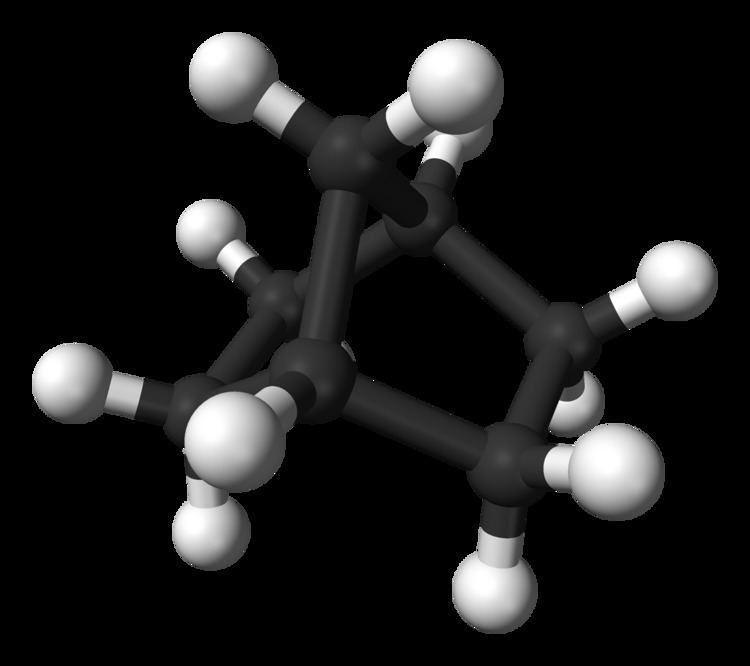 | ||
A bridged compound is a chemical compound, generally an organic compound, but also possibly inorganic, that has two or more rings (a ring system) that contains a bridge—a single atom or an unbranched chain of atoms (or even just a valence bond) that connect two "bridgehead" atoms. The bridgehead atoms are defined as any atom that is not a hydrogen, and that is part of the skeletal framework of the molecule that is bonded to three or more other skeletal atoms. Clayden simplifies this description, saying that bridged bicyclic compounds "are just what the name implies—[molecules in which] a bridge of [an atom or of atoms] is thrown across from one side of the ring to the other," examples of which are shown at left and right, and below. The presence of the bridge connecting the bridgehead atoms, which are most often two non-adjacent atoms, distinguishes bridged compounds from fused ring compounds that have two rings linked by two adjacent atoms, and from spiro compounds that have two rings linked by a single atom.
Contents
Bridged compounds may be fully carbocyclic (all carbon) or heterocyclic (having one or more non-carbon atoms). The principle and bridging rings are almost always different in nature, though they can be identical. Although sketches of organic structures may make bridged compounds appear planar, they are not; for instance, comparing the 3D ball-and-stick model of norbornane at left, with the image shown at right, makes clear the bridging ring ensures that the molecule is not planar.
Nomenclature
The nomenclature of bridged compounds was established by the IUPAC based on the system introduced by von Baeyer. Some important concepts and definitions for bridged compounds are as follows.
Examples
Examples include: norbornane, shown above, along with other alicyclic (purely hydrocarbon) examples in the Nomenclature section; adamantane and its amine analogs memantine (shown), amantadine (shown), and rimantadine (the latter two historic influenza drugs); the heteroatom bridgehead examples hexamine (shown) and 1,4- Diazabicyclo[2.2.2]octane (DABCO, shown in two representations); morphan, an example having a heteroatom in a bridge (shown); biperiden; and methenamine.
